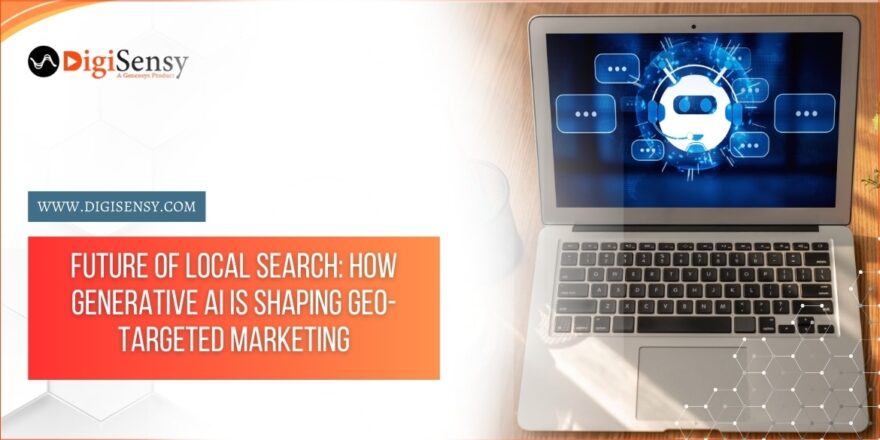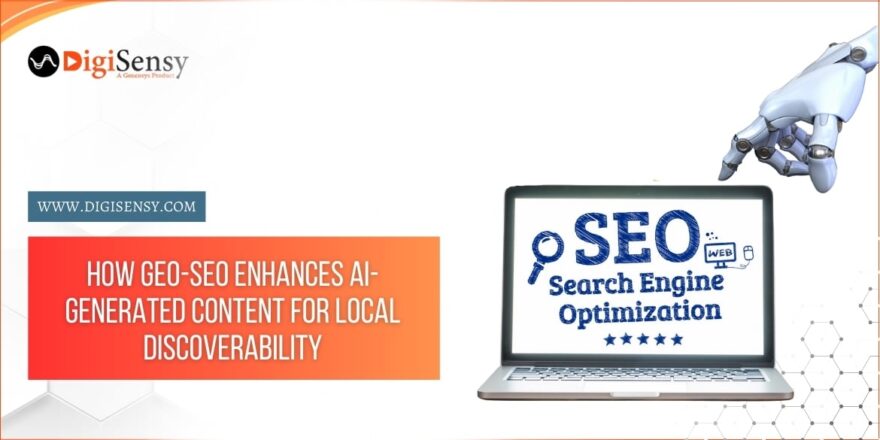In the never-resting circle of digital marketing, new platforms, customer behaviours, and AI role in digital marketing technologies are formed and therefore need to be nurtured from changing. For one brief moment, everything was optimized for humans. Then we were told to play nice with search engines (hello, SEO). Now, along comes some new opportunities for investigation: Generative Engine Optimization, or GEO niche-specific strategy for the era of AI-generated content and search.
In case you have never heard of GEO, worry not. For sure, you’re not alone. Considered an extremely recent concept, it is growing by leaps and bounds. The more popular AI tools like ChatGPT, Gemini, Claude, and Perplexity become ways for users to search, learn, and interact with content, the more it becomes necessary for marketers to evolve. GEO assures relevant marketer evolution.
Let’s get into what Generative Engine Optimization is, what its importance is, and how to feather the nest for your brand in this next wave of digital discovery.
What is Generative Engine Optimization (GEO)?
Generative Engine Optimization (GEO) means optimizing your content and online presence for discoverability, referencing, and citation by AI-powered generative engines such as ChatGPT, Google’s Search Generative Experience (SGE), and other LLM-driven tools.
Traditional SEO looks at how search engines rank web pages for human users. GEO, on the contrary, deals with how generative engines understand, retrieve, and exhibit your information in response to user-facing prompts.
So what’s the key difference then?
- SEO: Makes Google rank your blog post.
- GEO: Make ChatGPT mention your brand in its response.
Picture in your mind a user who asks an AI tool, “What are the best CRMs for startups?” With strong GEO, your brand’s name might be mentioned in the AI’s response, even though no user has clicked through to a traditional search result.
Why Does GEO Matter Now?
- AI-powered search is gaining ground fast. Consider these statistics and trends:
- By 2024, over 100 million patrons will be ChatGPT users regularly.
- SGE from Google is rolling out slowly; the generative summary comes before traditional links.
- TikTok, YouTube, and AI chatbots are increasingly favoured by Gen Z and Gen Alpha instead of traditional search engines.
This means generative engines are becoming the first point of contact between users and brands. If you’re not optimized for this shift, you risk being invisible in the AI age.
GEO isn’t meant to replace SEO, but instead to take firms farther into the world of conversational AI and machine-curated answers.
How Generative Engines Find and Use Content
Before getting into the “how-to” of GEO, it helps to understand how generative engines operate and use online content.
Because most AI tools are trained upon some amount of public web data, curated datasets, and sometimes proprietary sources, they do not crawl websites in real-time like Google does. They would rather rely on
- High-authority sites (like Wikipedia, major publishers, and academic databases)
- Structured Data (e.g., schema markup, product data feeds)
- Brand mentions and citations throughout the web
Generative engines aim to give accurate, unbiased, and comprehensive answers. That means:
- They give preference to sources that are consistent and widely cited.
- They give low preference to spammy, overly promotional content.
- Sometimes, instead of giving direct links to a website, the engine tends to rephrase or summarize the content.
Therefore, how do you get noticed? Let me discuss the tactics a little.
Generative Engine Optimization Strategy
-
Establish Topical Authority
AI tools look for trusted voices in particular niches. Just as in SEO, being an expert in a niche area will earn more citations.
- Concentrate your content around a few key themes or industries (SaaS marketing, eco-friendly products, remote team management).
- Have an ongoing series of original, authoritative, data-backed, and deep articles that always keep a high standard.
- Include expert quotes, data, case studies, and FAQs. These are the most valuable assets for AI training sets.
Pro Tip: Creating cornerstone content, such as all-encompassing guides or whitepapers, is a great way to build up topical authority.
-
Be Cited by Authoritative Sources
Generative engines drain data from trusted sites. Having your brand or content get referenced by authoritative domains puts it in the running for AI responses.
- Send your insights to journalists or a guest post.
- Get mentioned in listicles, product roundups, or industry analyses.
- Become a guest in interviews or podcasts that are transcribed and put online.
It doesn’t matter if these are backlinks or not (although they can be)-all that matters is getting into the data pool that LLMs are trained on.
-
Use Structured Data and Schema Markup
Use structured data so that search engines and generative engines like GPT can better understand your content.
- Add an FAQ schema for answering typical questions.
- Put a How-To schema to describe steps within complex processes.
- Put an Author schema to provide identity for thought leadership and trust.
Usually, tools like ChatGPT will look for content that is well-organized and labeled because it is easier to summarize and serve.
-
Create AI-Friendly Content Formats
Think like a prompt. What would a user ask that your brand could answer?
- Write conversationally.
- Break content into clear sections that are digestible.
- Use bullet points, subheadings, and TL;DR summaries.
You’re not just writing anymore for humans; you’re writing for the model now. Make it easy to digest and reference.
-
Answer the Question Asked of AI Tools
What are the types of questions that your target audience would ask ChatGPT, Claude, or Gemini?
Use tools like:
- AlsoAsked
- AnswerThePublic
- ChatGPT
Then create optimized content around those questions. Be it blogs, LinkedIn posts, or short-form answers that would otherwise feature in a snippet created by AI.
-
Stay Vigilant About AI-Specific Analytics
Most traditional analytics tools don’t quite let you know if you are showing up in AI responses yet.
But you can:
- Manually track branded queries inside AI tools.
- Use Perplexity or Poe-type AI tools to find how your brand is referenced.
- Keep an eagle eye on referral traffic from browsers powered by AI (Arc, Brave).
As the landscape evolves, new GEO tools will arise. Stay inquisitive and experiment with new ones.
GEO vs SEO: Key Differences at a Glance
| Features | SEO | GEO |
| Primary Audience | Search engines (Google, Bing) | Generative engines (ChatGPT, SGE) |
| Goal | Rank in top search results | Get cited in AI-generated answers |
| Tactics | Keywords, backlinks, meta tags | Authority building, AI-readable structure, and content citations |
| Metrics | Organic traffic levels; SERP position | Mentions in AI tools, brand visibility in generative answers |
Future-Proofing Your Brand with GEO
GEO isn’t just a trend; it’s from larger changes in how people access information. As generative AI becomes more and more embedded in everyday tools (smart assistants, voice search, and even enterprise chatbots), the visibility of your content will depend on how well it speaks to these machines.
Get started today:
- Top content audit for AI-friendliness.
- Build brand presence across authoritative platforms.
- Work on clarity, credibility, and consistency.
GEO is not about gaming a system; it is about making your brand helpfully relevant and easy to find in an AI-shaped world.
Final Thoughts:
At DigiSensy, we believe the future of digital visibility is at the crossroads of human creativity and machine intelligence. Generative Engine Optimization (GEO) is a paradigm shift in how we view content strategy, brand authority, and user engagement.
Want to find out how GEO can help put your brand in front of the next billion AI-assisted users? Let’s talk! We help businesses with growing their digital footprint, from grassroots SEO to cutting-edge GEO.




